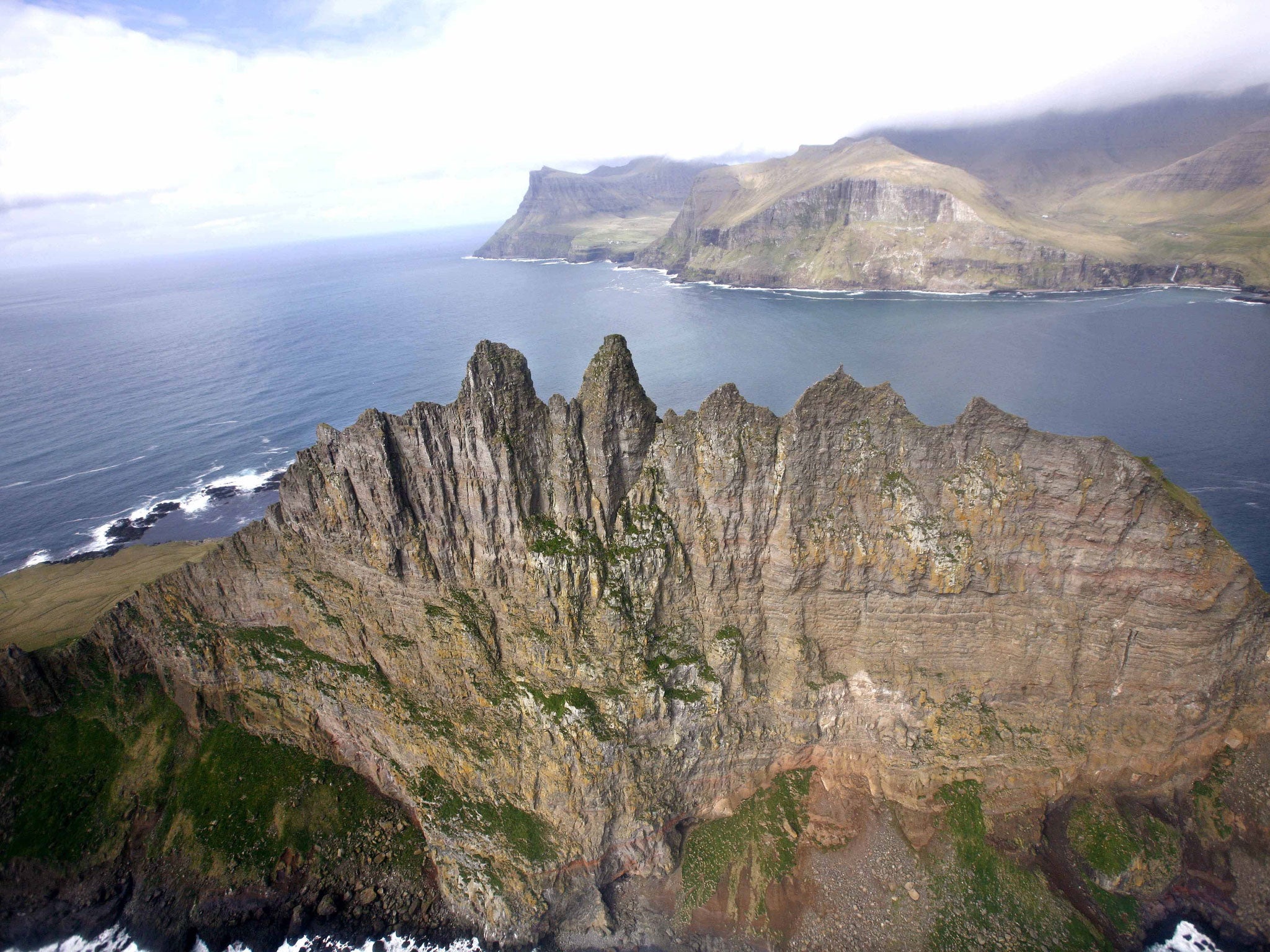Denmark’s historic claim to the Faroes in doubt as archaeologists find proof that islands were inhabited before arrival of first Norse colonists
Discovery indicates existence of sea-faring northern Europeans before Vikings

Your support helps us to tell the story
From reproductive rights to climate change to Big Tech, The Independent is on the ground when the story is developing. Whether it's investigating the financials of Elon Musk's pro-Trump PAC or producing our latest documentary, 'The A Word', which shines a light on the American women fighting for reproductive rights, we know how important it is to parse out the facts from the messaging.
At such a critical moment in US history, we need reporters on the ground. Your donation allows us to keep sending journalists to speak to both sides of the story.
The Independent is trusted by Americans across the entire political spectrum. And unlike many other quality news outlets, we choose not to lock Americans out of our reporting and analysis with paywalls. We believe quality journalism should be available to everyone, paid for by those who can afford it.
Your support makes all the difference.They are famous for fishing and a rich Viking history, but new archaeological evidence shows that the Faroe Islands, situated half way between Scotland and Iceland, were inhabited 400 years before the arrival of the first Norse colonists.
The official history of the Faroes states that the remote North Atlantic archipelago was first settled by Vikings in the 9th Century AD and was little more than a barren outcrop of wind-blasted land prior to this point in time.
However, archaeologists have found definitive proof that people were living on at least one of the Faroe Islands at some point between the 4th and 6th Centuries AD - which is far too early for these intrepid settlers to be true Vikings.
The identity and origins of these people remain a mystery but they must have cultivated barley, brought on boats from mainland Europe as seed grain, and burned peat for cooking - scattering the ashes to stabilise the shifting sand dunes, scientists said.
"The evidence we have found is in the form of small patches of peat ash mixed with small bits of burnt bone and carbonised barley grain. We know this is human because you can't get that mix in nature," said Mike Church, an archaeologist at Durham University.
Radio-carbon dating has pinpointed the period in which the barley grain was harvested, which makes this inhabited site on the island of Sandoy much older than the earliest known Viking settlement, Dr Church said.
"There is now firm archaeological evidence for the human colonisation of the Faroes by people some 300 to 500 years before the large-scale Viking colonisation of the 9th Century AD, although we don't yet know who these people were or where they came from," he said.
The colonisation of the Faroes hundreds of years before the Viking conquest of coastal regions beyond north-west Europe, stretching from Scandinavia to Iceland, Greenland and as far as North America, indicates that there must have been another, earlier group of sea-faring northern Europeans capable of extensive oceanic exploration.
One possibility is that they were Christian "anchorites" - hermit monks - from Scotland or Ireland. The Irish monk Dicuil, writing in about AD825, attested to "hermits from our land of Ireland" living in remote islands to the north of Britain prior to the arrival of Norse pirates, although he did not specifically described the Faroes.
In another Latin account of a voyage made by Saint Brendan, who lived between about AD484 and AD578, there is a description of islands resembling the Faroes in the seas to the north, but again scholars believe this is far from conclusive.
The early colonists most likely settled in the flat, sheltered bays of the Faroes. This is also where the Vikings built their long-houses, which likely led to the destruction of any archaeological evidence of earlier dwellings, Dr Church said.
Whoever the first inhabitants were, they must have been able to build sea-faring boats, probably using animal skins, and been able to navigate the high seas. They must also have come prepared to settle, Dr Church said.
"If you were going to settle there, you'd need to provision your boat and plan in advance. You'd need to know the islands were there. It's unlikely that this settlement was accidental," he said.
Simun Arge of the National Museum of the Faroe Islands, a co-author of the study published in the journal Quaternary Science Reviews, said that the settlement was probably not temporary.
"Although we don't know who the people were that settled here and where they came from, it is clear that they did prepare peat for use, by cutting, drying and burning it, which indicates they must have stayed here for some time," Dr Arge said.
"We now have to digest these dates of this early evidence in relation to other sources and consider whether there may be other similar sites, elsewhere on the islands, which may be able to provide us with further structural archaeological evidence," he said.
Faroe Islands in numbers
1388: Date when Faroe Islands came under Danish control. Now a principality with its own government.
160 miles: Distance from Faroes to North Rona, Scotland. Distance to mainland Britain is 200 miles and to Iceland is 280 miles.
49,709: Population in 2013. It has grown steadily from about 40,000 in 1970, and 32,000 in 1950. Population in 1327 was about 4,000.
87 per cent: Proportion of male Y chromosome of Faroese men traced to Scandinavian descent. This compares to 84 per cent of Faroese female mitochondrial DNA traced to Scottish ancestry.
Join our commenting forum
Join thought-provoking conversations, follow other Independent readers and see their replies
Comments